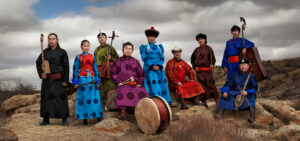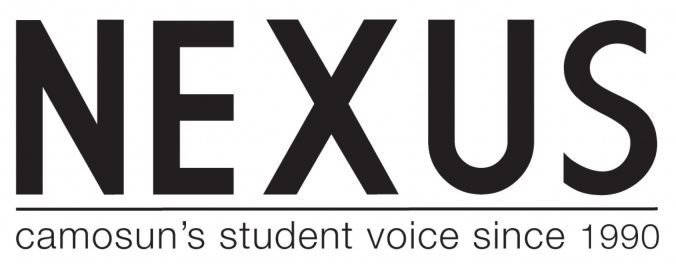Throat singing, traditionally known as khoomi, is a form of overtone singing from Mongolia, where the throat is used to create a raspy sound that can resonate at many frequencies. Appearing at UVic’s Farquhar Auditorium in March, Anda Union is a group of nine musicians formed in 2003, hailing from the Xilingol Grassland area of Inner Mongolia. Dressing in beautiful traditional Mongolian clothing, they play several regional instruments including the horse-head fiddle, or tsuur; the three-holed flute, or maodun chaoer; and Mongolian versions of the dulcimer, zither, lute, and mouth harp.
The music created by Anda Union is difficult to describe from a Western framework. Heavy in stringed instruments that create simultaneously sorrowful and joyful melodies, they use traditional drums that sound like thunder to generate a rhythm that penetrates deeply to the core of the listener.

Several varieties of singing are used, including khoomi, but also lyrical styles that lean into the natural musical qualities of Chakhar Mongolian to produce beautiful, warbling melodies.
Anda is a term used to describe a depth of brotherhood and sisterhood that sees friends held as close as blood relatives, and the members of Anda Union combine a blend of traditional and new sounds to unite the cultures of Mongol tribes from the era of Genghis Khan and make them accessible to new generations.
Listening to the powerful sounds reverberating through me, I couldn’t help but feel a little sad for the majority of North Americans who have been raised into a superficial mindset that either melts all other cultures into a bland, spiritless, homogenous mess, or focuses so heavily on highlighting global cultures that we forget that we really have very little to call our own. We celebrate Justin Bieber, Taylor Swift, the Kardashians, Metallica, Joni Mitchell, and Neil Young, but North American countries are less than 250 years old, while countries such as Mongolia have existed for 5,000 years, through millennia of struggle and strife that have created rich cultural backgrounds that feel much stronger than ours.
As a modern-day Canadian awash in the tedious soup of social media, Hollywood celebrity culture, and capitalist commercialism, I feel bereft of a distinct and memorable culture that I can identify with. Much of the time I lose sight of the truth that most of the world’s populations have had far more rich histories than Canada will ever be able to claim since its inception, having cavalierly discarded centuries of generational wisdom and tradition that the First Peoples knew intimately. It is of utmost importance, therefore, that Canadians and Americans travel or learn about distant lands and peoples, to embrace and learn about the many beautiful histories and timelines spanning the globe.
There’s more to life than celebrity retweets, vapid game shows and reality television, Walmart rollback sales and Amazon Prime delivery. Anthropological documentaries and incredible, breathtaking live multicultural events like Anda Union remind us to look beyond the tepid grind of modern Western living and witness an incredible tapestry of world history, before it sinks beneath the oozing sludge of time and apathy, lost forever.
